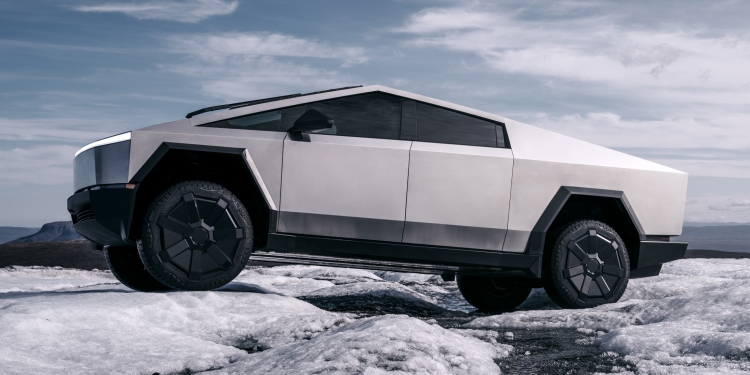Four long years after Tesla first revealed the Cybertruck to the world, the highly polarising electric pick-up truck has finally made it into customers’ hands. It may have come two years later than the company itself said it would, but those who were patient enough are getting a vehicle with some pretty impressive specs—even if it’s not quite nigh-on indestructible as Tesla promised.
It’s way bigger than your Hilux
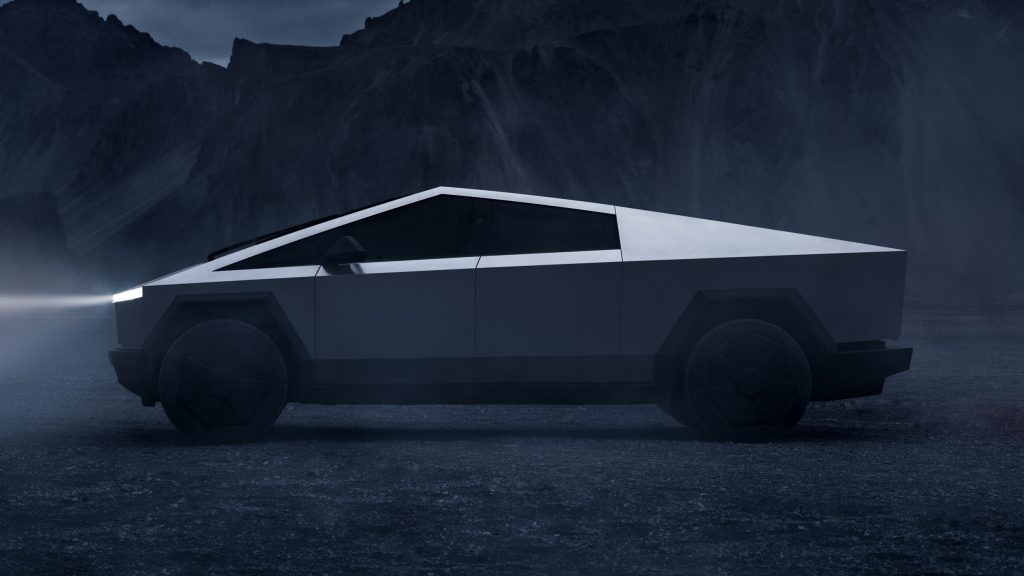
The first thing you have to understand about the Cybertruck is that, like other American full-size pick-ups, it is far bigger than the one-tonne pick-ups we have over here—you know, things like the Toyota Hilux and Ford Ranger. It measures 5,682mm long, a whopping 2,200mm wide and 1,790mm tall, which means it’s 357mm longer and 300mm wider (!) than that Hilux. To give you a sense of perspective, the Tesla is over 130mm longer than a Rolls-Royce Ghost.
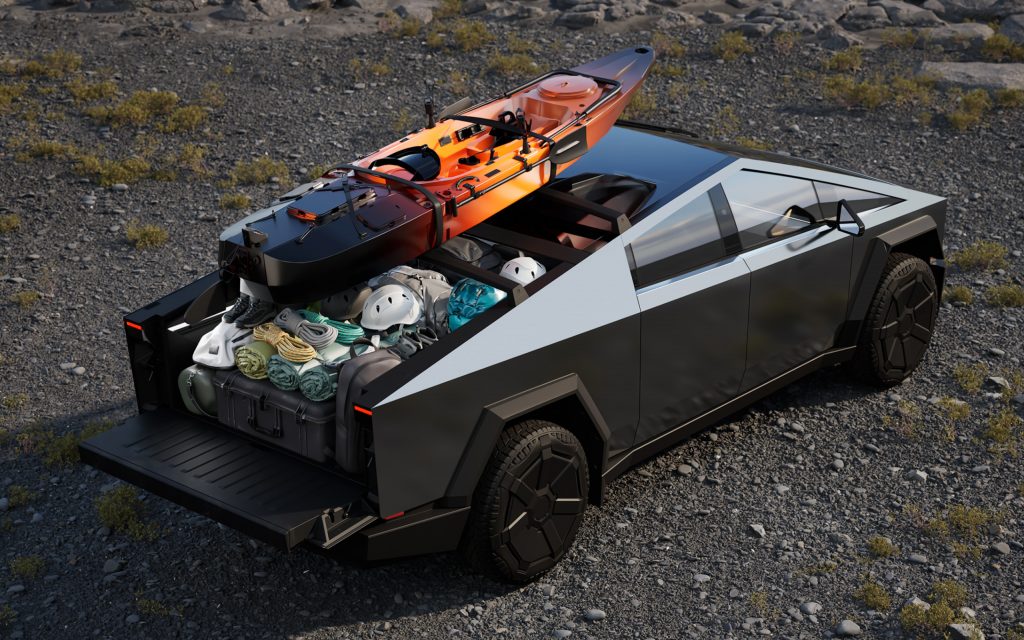
As you can imagine, those massive dimensions provide a bed larger than anything you can get on the market locally. At six feet (1,829mm) long and four feet wide (1,219mm) wide, it’s over 300mm longer than a Hilux double cab’s, and while it’s around 320mm narrower, the Hilux’s figure does not include wheel arch intrusion, whereas the Tesla’s does. The company says you’ll be able to fit 4x8ft construction materials with the tailgate down.
What’s more, you can fold the rear seats up to carry more items inside. This being a Tesla, of course, there’s also a sizeable front boot, resulting in an overall cargo capacity of 3,424 litres—including 1,897 litres of lockable storage. The bed counts as lockable thanks to the power-sliding tonneau cover.
It’s much faster, too
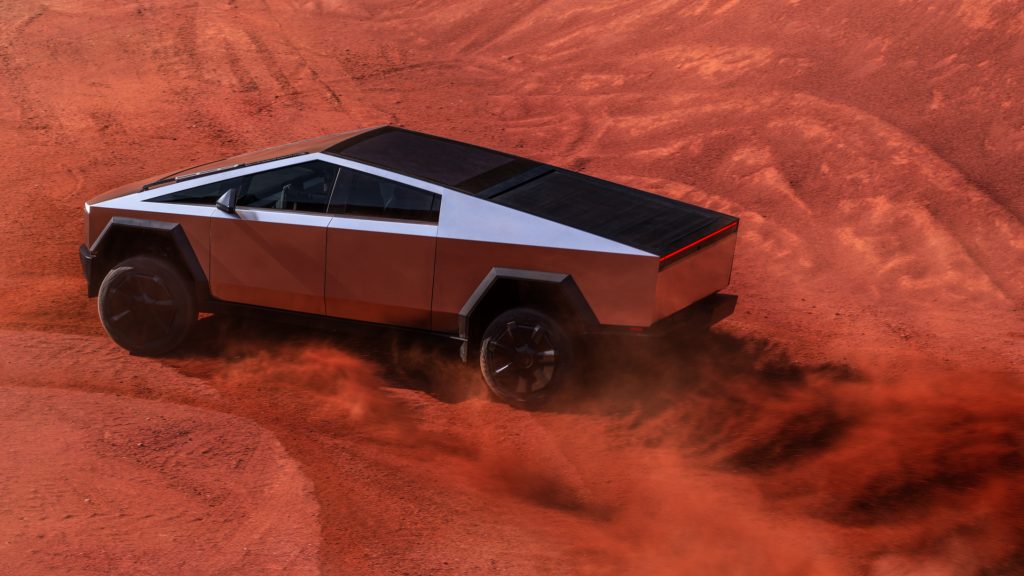
Being a Tesla, the Cybertruck offers some serious pick up (haha geddit?) and go. The range starts with a single-motor rear-wheel-drive model that gets from zero to 60mph (97km/h) in 6.5 seconds on its way to a top speed of 180km/h. The dual-motor all-wheel-drive version produces 600hp, slashing the 0-60 time to 4.1 seconds.
Feat of Strength 3: Cyberbeast (0-60 in 2.6s) pic.twitter.com/q0cK9zb21D
— Tesla (@Tesla) November 30, 2023
If you want even more power, however, you can get the range-topping model, called the Cyberbeast (cue eye rolls everywhere). This uses a triple-motor setup to send 840hp to all four wheels, zipping the leviathan from 0-60 in just 2.6 seconds (with the rollout subtracted, as is typical for Tesla these days) and past the quarter mile in under 11 seconds.
Company boss Elon Musk said during the delivery event that the Cyberbeast is able to beat a Porsche 911 (likely the base Carrera, which gets to 60mph in four seconds flat) to the quarter mile while towing another 911. Working with the steer-by-wire system, the rear-wheel steering improves the truck’s turning circle and increases its agility.
Less range than promised
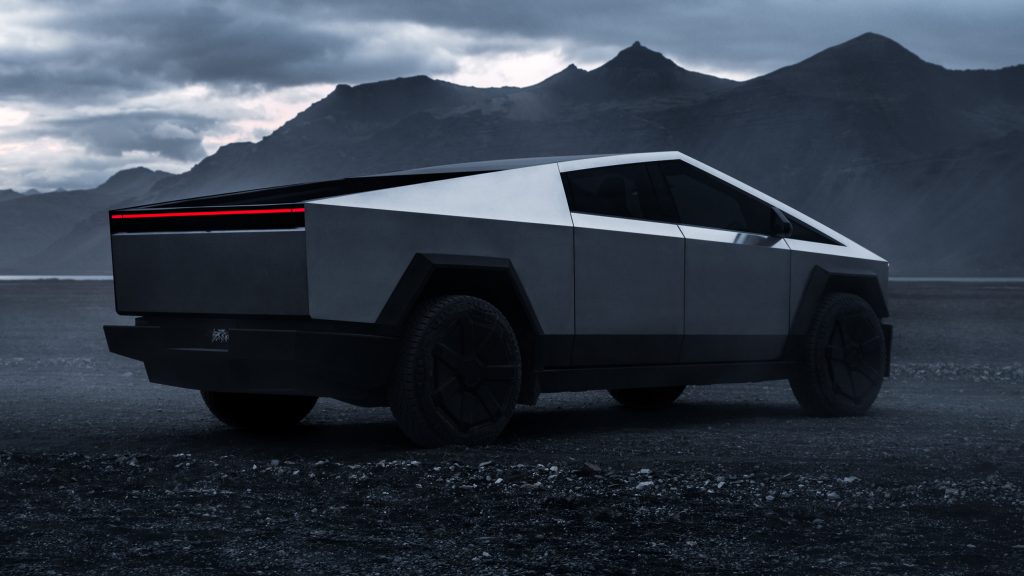
Less impressive are the range figures. Tesla previously promised over 500 miles (805km) on a single charge, but even the most frugal AWD model has an estimated range of 547km, while the Cyberbeast drops that figure to 515km. The cheapest RWD variant, on the other hand, can only travel up to 402km. On the flip side, the Cybertruck is the first Tesla to finally adopt an 800-volt architecture, which should enable it to sustain higher DC fast charging power for longer at Tesla Superchargers.
Another metric where the Cybertruck falls short of Tesla’s original claims is towing capacity, which has dropped from “more than 14,000 pounds” (6,350kg) to 4,900kg on all-wheel-drive versions, while payload has also fallen from 1,588kg to 1,134kg.
It’s bulletproof, but you can’t throw ball bearings at its windows anymore
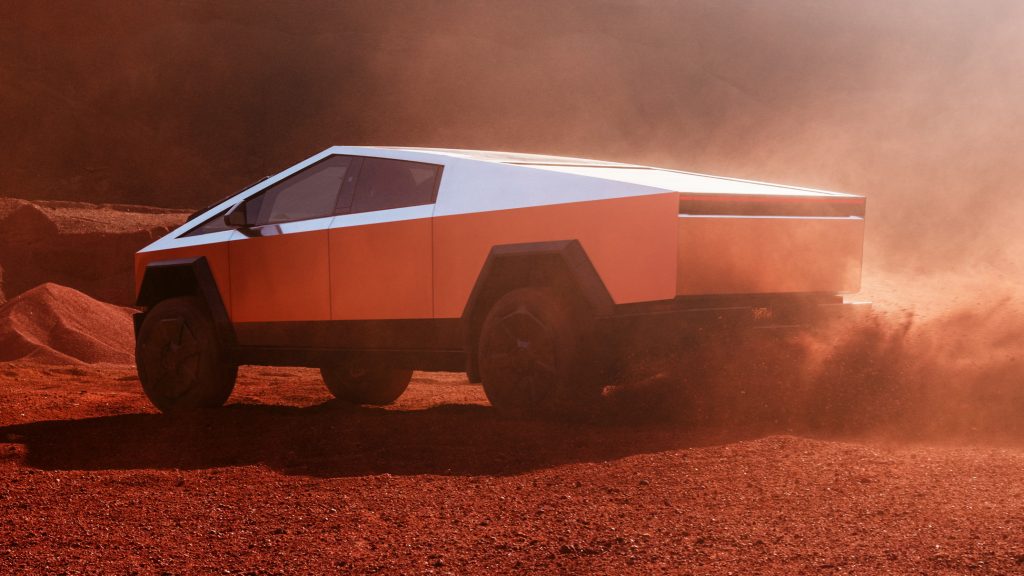
The Cybertruck remains by far the most distinctive truck you can (technically) buy, with its edgy, slab-sided design made up almost entirely of stainless steel. This unpainted, corrosion-free “exoskeleton” is said to be dent resistant, and repairs are simple since the panels are flat.
Added to that, Elon Musk claimed the specially-developed “ultra-strong” steel alloy enables the Cybertruck to offer greater torsional stiffness than the McLaren P1 hypercar. Tesla also played a video at the event showing the Cybertruck being bulletproof, withstanding being shot by a Tommy gun, a Glock 9mm pistol and an MP5 submachine gun.
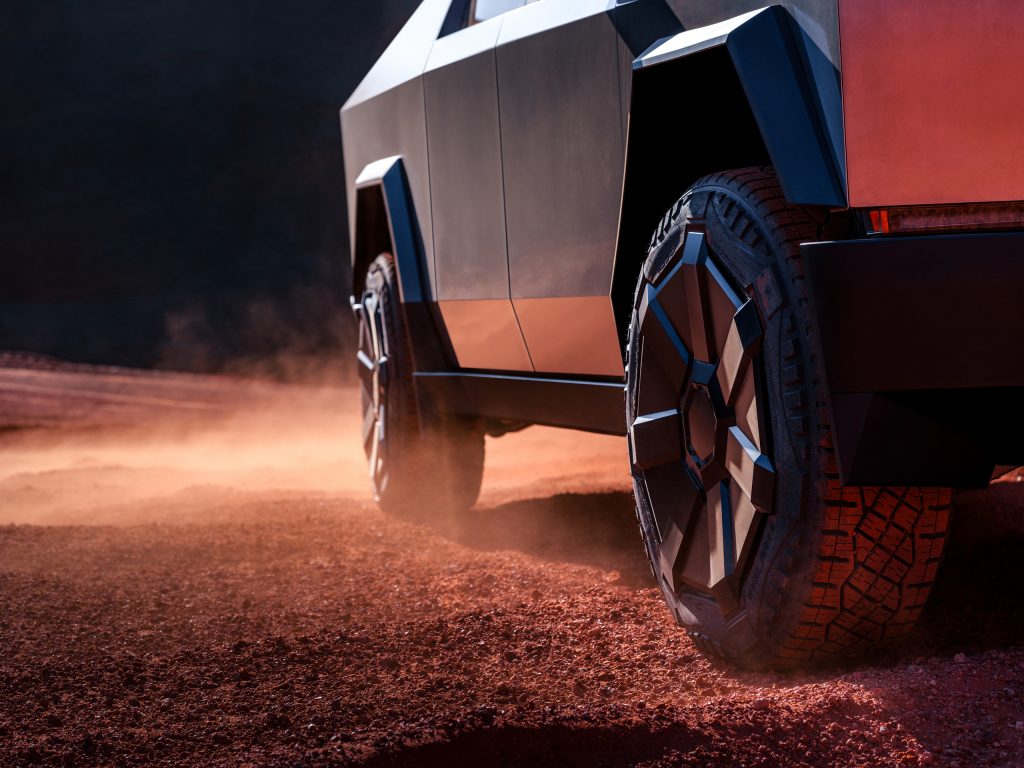
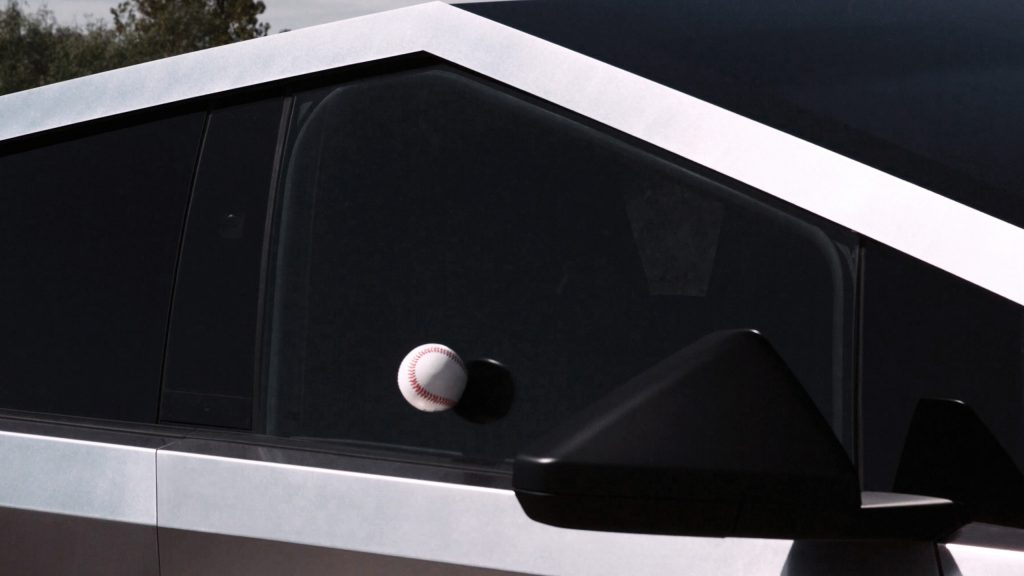
The windows also use “armour” glass, but the company was wary about repeating the infamous “shattered window” incident from the 2019 reveal, with chief designer Franz von Holzhausen softly throwing a baseball instead of a metal ball bearing at the truck to demonstrate the glass’ strength. More pertinent to everyday users is the fact that the Cybertruck uses acoustic glass for better noise suppression.
One drawback of all this added toughness is weight. Even the regular AWD model is nearly three tonnes, tipping the scales at 2,995kg, and with the Cyberbeast this figure balloons to 3,104kg. The Cybertruck rolls on 20-inch wheels with what appear to be black aero covers and specially-designed tyres that mimic the appearance of the original prototype.
Typical Tesla minimalist cabin
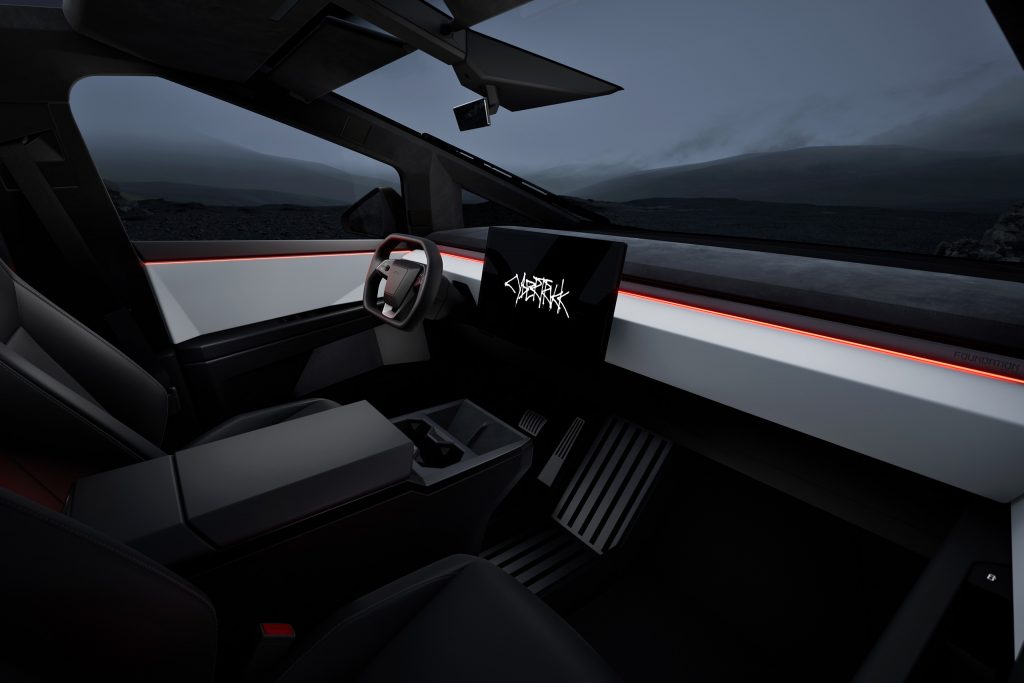
As is becoming a trademark for Teslas these days, the Cybertruck comes with an exceedingly minimalist interior with an almost yoke-like steering wheel (yes, with integrated indicator and wiper controls and no stalks), a floating centre console and not much else. The centre touchscreen now measures a massive 18.5 inches across, while a second 9.4-inch touchscreen at the back sits between the two front seats.
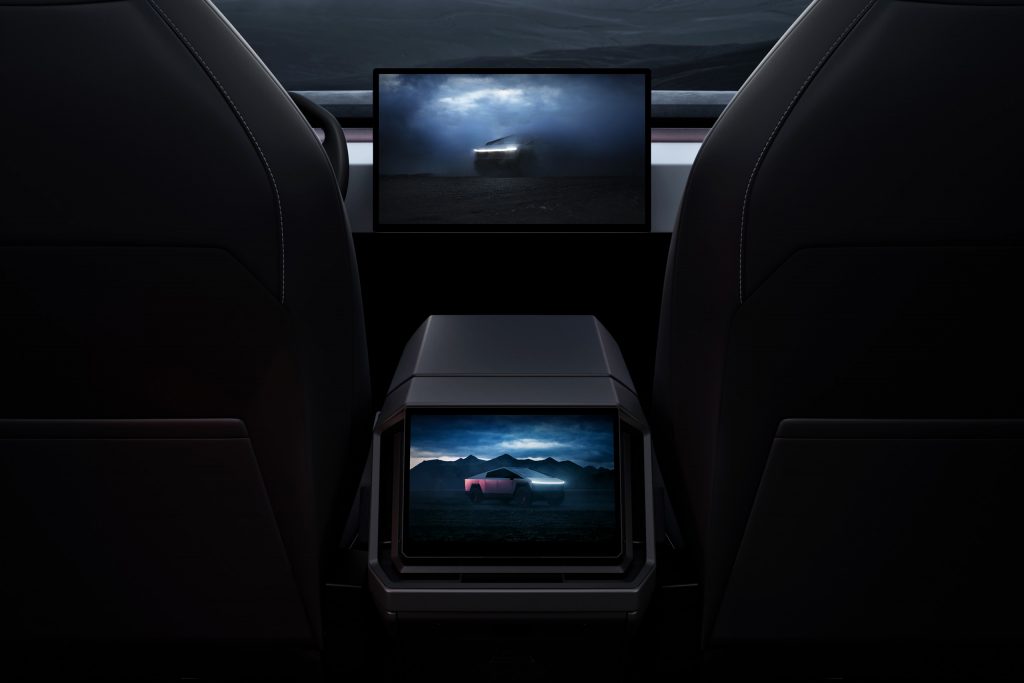
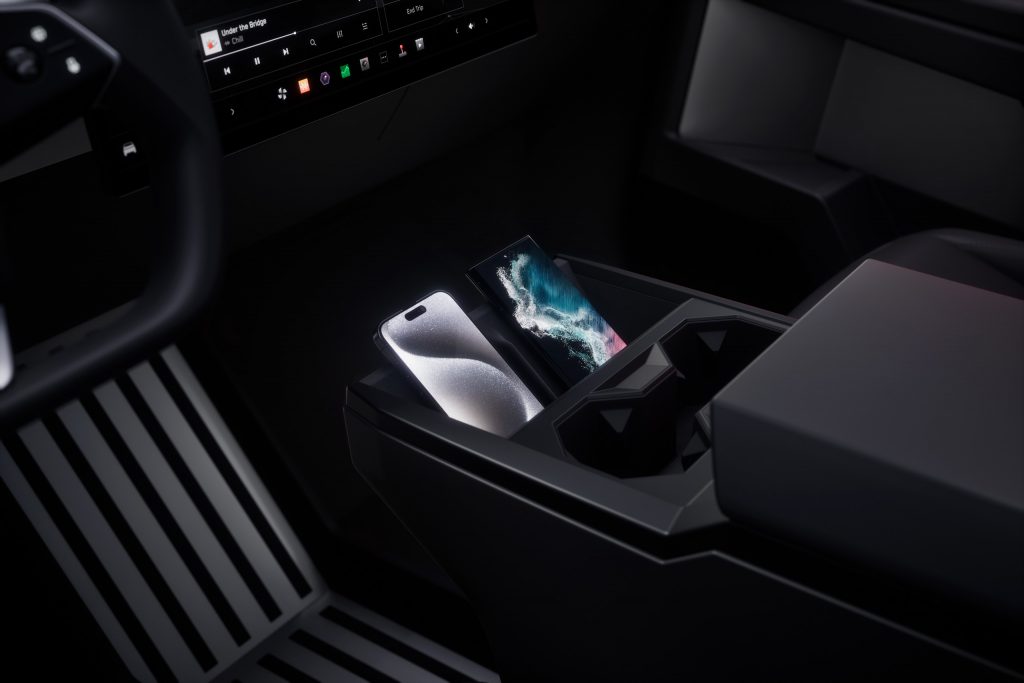
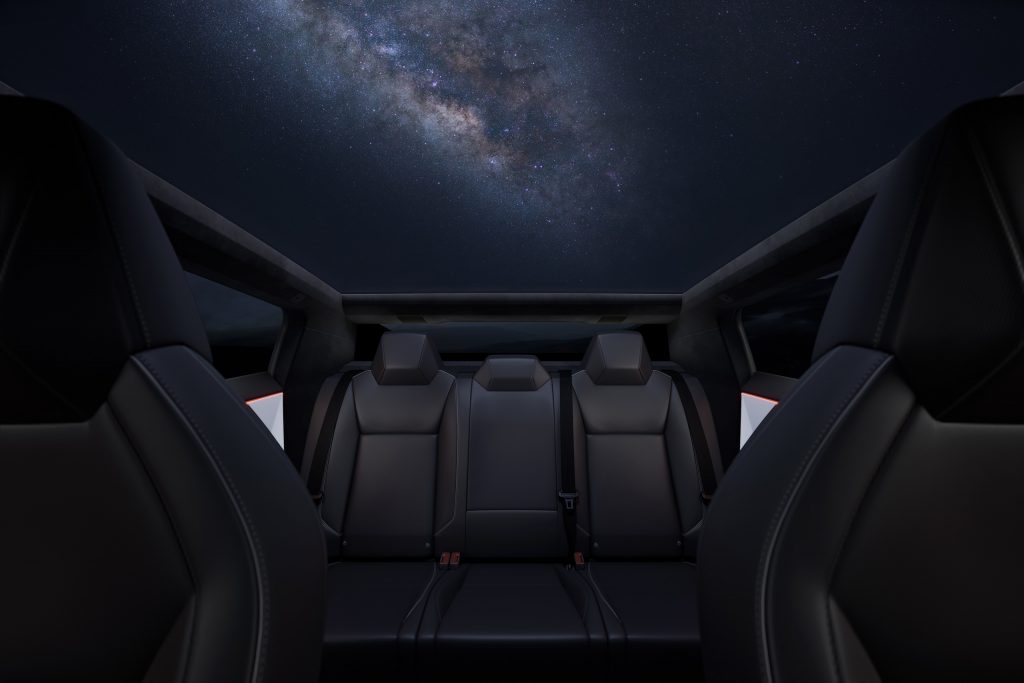
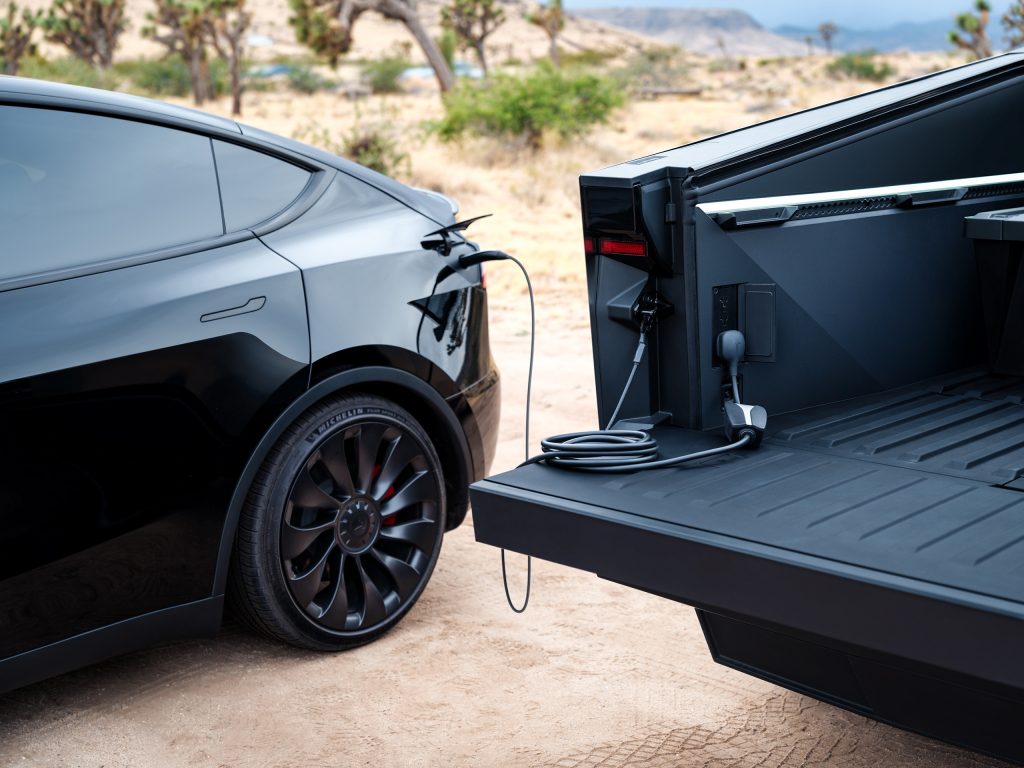
Details remain slim at the moment, but it’s been confirmed the truck will offer the usual Tesla features—twin wireless chargers, a HEPA air filter that enables a “bioweapon defence mode,” a large glass roof and a 15-speaker sound system with twin subwoofers. Tesla is also finally offering a vehicle-to-load (V2L) function through 120- and 240-volt sockets in the bed, outputting up to 11.5kW of power.
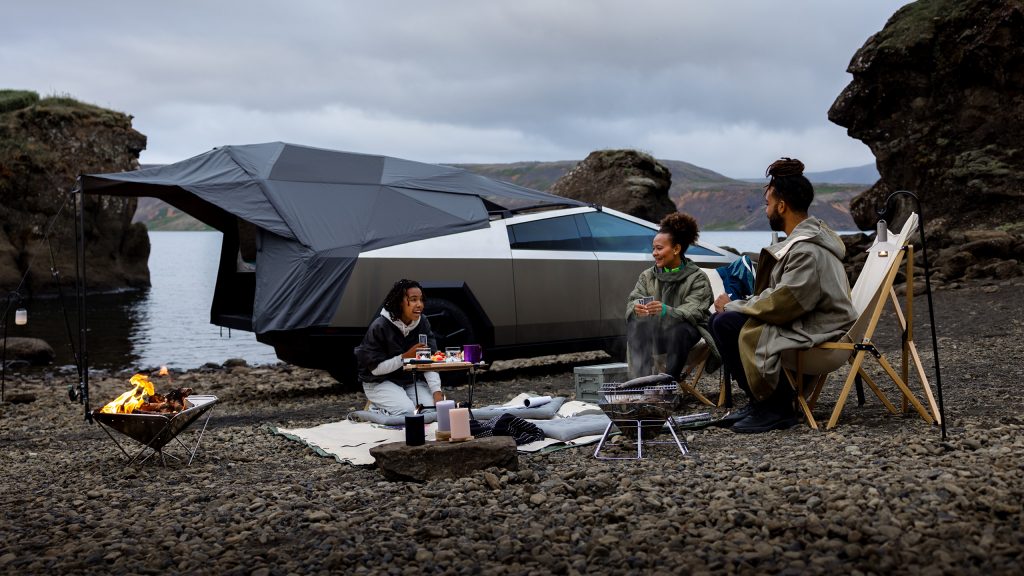
The company is also offering a number of its (sure to be overpriced) accessories for the Cybertruck, including a sleek roof-mounted light bar (providing up to 480 metres of illumination), a “basecamp” tent that can be inflated in minutes and a spare tyre. An optional “range extender” battery mounted in the bed adds over 190km of range.
Priced from RM285,000 in the US

Tesla has also revealed estimated pricing for the Cybertruck, which is much higher than originally planned. The RWD model is stated to start at USD 60,990 (around RM285,000), which is over USD 21,000 (around RM93,500) more than it was supposed to. And given that deliveries for the base variant aren’t slated to kick off until 2025 at the earliest, there’s still scope for it to be bumped up even further.
If you want your truck to arrive anytime within the next 12 months, you’ll have to go for one of the AWD models—the standard one at USD 79,990 (around RM373,800, an increase of over USD 30,000 or RM140,200) or the Cyberbeast at USD 99,990 (around RM467,300, also an increase of over USD 30,000).
Don’t hold your breath for a Malaysian launch
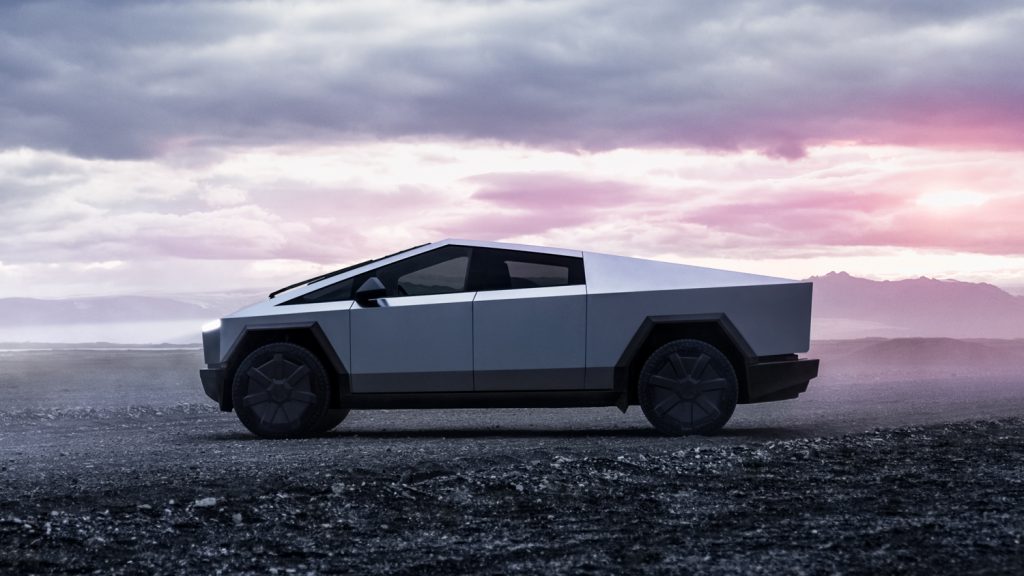
Even at these inflated prices, the Cybertruck might seem like a good deal for us Malaysians, given its capabilities and interior creature comforts. After all, Tesla does finally have an official presence here, and it has a track record for bringing in its vehicles at a lower price compared to many other countries. But there are a few issues that count against it.
The first is that the Cybertruck will likely only be offered in left-hand-drive form for the foreseeable future, as the market for full-size pick-ups globally isn’t nearly big enough to justify the considerable expense of a right-hand-drive conversion. Tesla is known for doing this even to cars that have been converted to RHD—the latest Model S and X have been left-hand drive only since the latest 2021 refresh.
Even if Tesla decides a RHD conversion is worth it, it will need to build enough Cybertrucks to satisfy the US market first—a tall order as it is, with one million orders said to be already in the books.
Musk sought to “temper expectations” even before the truck was delivered, saying that there will be “enormous challenges in reaching volume production” because the uncompromising stainless steel construction made production “10,000 per cent harder.” He added that Tesla wants to eventually make 250,000 Cybertrucks a year but won’t be able to do so until 2025 at the earliest.
And even after those challenges have been solved, there’s the issue of the Cybertruck’s size. I mean, honestly, would you want to thread a truck that’s nearly 5.7 metres long and 2.2 metres wide through our narrow city streets, let alone try and park it in our parking lots that, let’s not forget, barely fit our “puny” one-tonne pick-ups?

